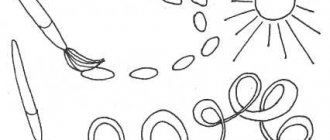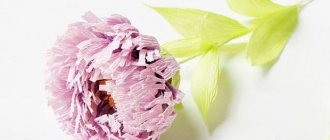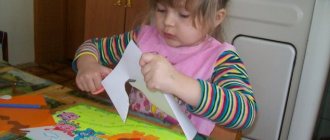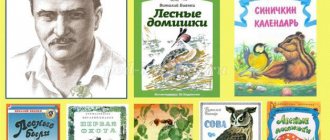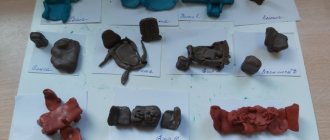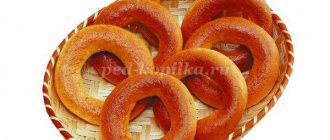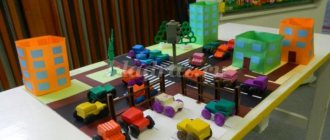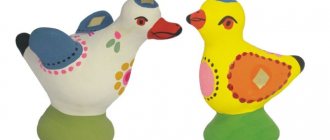Abstract of the GCD on artistic creativity (modeling) “Rays for the sun”
Goal: developing skills in working with plasticine, awakening interest in modeling.
Tasks:
1. Improve children’s ability to roll a piece of plasticine using circular movements of the palms, giving it a spherical shape. 2. Teach the technique of flattening a ball on a horizontal surface to obtain a flat image of the original shape. 3. Strengthen the children’s ability to separate small lumps from a large piece of plasticine and roll them between their palms with direct movements of both hands. 4. Develop the ability to navigate on a sheet of paper. 5. Develop fine motor skills. 6. To cultivate in children responsiveness, kindness, the ability to sympathize with characters, and the desire to help them.
Materials for the lesson:
• thick cardboard of light blue color with silhouettes of a bee, bird, hare, rooster, size 1\2 A4; • plasticine of yellow, red, orange colors; • hand wipe; • modeling board.
Progress of the lesson
1. Organizational part.
The teacher offers to guess the riddle.
Who gets up earlier than everyone else in the morning? Who gives everyone warmth and light? (Sun.)
The teacher shows a picture of the sun.
- Right. The sun wakes up before everyone else, washes itself from the clouds to be clean, and then rises high into the sky.
The cloud hides behind the forest, The sun looks from the sky and is so pure, kind, radiant. If we could get him, we would kiss him!
- Guys, look how sunny it is? (Round) Children, following the teacher, draw the sun in the air with their fingers. - And its rays are straight, like our hands. You and I have two hands, but how many rays does the sun have? (A lot.) What sunshine? (Children's answers...), And what are the rays of the sun? (Children's answers...), How many rays does the sun have? (Children's answers...). That's right, a lot. — The sun’s rays are everywhere: from the side, above, and below. He needs a lot of rays to warm everyone, to illuminate everyone with a bright light, to wake them up in the morning - flowers, birds, bunnies and squirrels, boys and girls. This is how good our sun is! But one day the sun did not come out into the sky. It was a cloudy and gloomy morning. Apparently the sun is not well, he does not have the strength to open his eyes and illuminate the earth with light. And the animals and birds became sad that they could no longer play and have fun. You and I will have to help out our friends while the sun is sick. But what are we going to make it from? Guys, look, I have plasticine, you and I can make our sun using plasticine. To make the sun look like a real one, let's remember what it is like. (Round.). And what else does our sun (Rays) have? What color could it be? (Red, yellow, orange).
2. Practical part.
Children can choose from red, yellow or orange plasticine. Place one part between your palms and roll the ball in a circular motion from left to right, pressing on it with your palm. Place the finished ball in the middle of the cardboard and lightly press on it to flatten it.
Finger gymnastics (after attaching the sun, children clench their fingers into a fist and unclench them, 3-4 times)
They applied and pressed, Our hands did not get tired.
Pinch off a small piece from the second part, place it between your palms and roll the sausage with straight movements of both hands. The resulting ray-column is attached to the sun, pointing it at a bee or bunny, lightly pressing it against the picture along the entire length of the ray. Make the remaining rays in the same way.
Finger gymnastics (after attaching several rays, children clench their fingers into a fist and unclench them, 3-4 times)
They applied and pressed, Our hands did not get tired.
- Look how light it has become in our room! It is your suns that shine so brightly. Guys, in the picture the sun has woken up and invites you to play with it.
3. Final part
Children perform the motor exercise “The sun rose in the morning.”
The sun rose in the morning (Stretching.) And went for a walk (Walking in place.) And on our street he liked everything (Tilts his head left and right.) The sun ran along the golden path. (Running in a circle.) And the sun came straight into our window. (Folding hands into a “window” shape.) Together we went with the sun to kindergarten. (Walking in a circle.) The sun caressed all the children at once. (Stroking himself on the head.)
- What a wonderful, kind sun! I stroked all the guys so that you grow up strong, healthy and kind, like the sun.
The teacher takes turns patting all the children on the head, calling each one by name.
Author: Gafarova Rimma Zainagatdinovna, teacher, MBDOU d/s “Belochka”, Kamensk-Uralsky, Sverdlovsk region, Russia
The article is published in the author's edition
Summary of a lesson on modeling with children of primary preschool age “Sun for animals”
Municipal preschool educational institution
combined kindergarten No. 390
ABSTRACT
modeling classes for preschool children
"Sunshine for animals"
Author-developer:
teacher Shuvalova Nina Mikhailovna
Nizhny Novgorod
2010
SUMMARY OF THE CLASS ON STYLE “SUN FOR ANIMALS” /2 JUNIOR GROUP!
OBJECTIVES: EDUCATIONAL. Teach children
convey the image of the sun in a plastic way, using the technique of smoothing plasticine along the contour. Strengthen the ability to roll out plasticine with straight movements, creating rays. DEVELOPMENTAL. Develop and strengthen fine motor skills of the hands. To develop aesthetic perception in children. EDUCATIONAL. To create in children an emotional attitude towards the poetic image. To foster in children a sense of empathy for the characters and a desire to help them. PRELIMINARY WORK. Reading K. Chukovsky’s fairy tale “The Stolen Sun”, looking at illustrations depicting the sun. Drawing the sun with colored pencils and paints. Conversations with children about fairy tale characters. MATERIAL FOR THE CLASS. For the teacher, illustrations for a fairy tale: sun, cloud, hare, sparrow. Outline of the sun on blue cardstock for display. For children - sheets of blue cardboard with an outline of the sun, yellow plasticine.
PROGRESS OF THE CLASS. 1. Preliminary conversation. Children sit around the teacher on the carpet.
The teacher reads to the children an excerpt from K. Chukovsky’s fairy tale “The Stolen Sun”, showing the corresponding illustrations. The sun walked across the sky and ran behind a cloud. The bunny looked out the window. It became dark for the bunny. The gray sparrow is crying. Come out, sunshine, quickly! We feel sad without the sun. We can’t see a grain in a field. The teacher asks the children what the animals should do now without the sun, inviting the children to join in the discussion of what they read. Next, the teacher asks the children to remember who helped save the sun? The teacher tells the children that the bear that saved the sun cannot help us because it is looking for its cubs. Children offer to help the animals themselves. The sun can be drawn with paints or pencils. You can also cut out the sun from colored paper and give it to animals. The teacher listens carefully to the children's advice, praises them for their resourcefulness and desire to help, and invites the children to go look for the sun. 2. PHYSICAL CLASS In the morning the sun rises Higher, higher, higher. By night the sun will set Lower, lower, lower. Okay, okay, Sunny is laughing. And under the sun everyone sings merrily. After the game, the teacher takes out the sun - a ready-made sample - and invites the children to go to the tables.
3. RESEARCH ACTIVITIES. The teacher offers to look at a sample of the sun. With the help of questions, children determine the shape of the sun, what parts it consists of./circle, sticks-rays./ Next, the children name the color, with the help of the teacher they draw conclusions why the sun is yellow. The color is warm, so it warms everyone up. Then the teacher suggests looking at the contours of the sun laid out on the tables. The teacher asks the children to run their finger along the outline in order to visually and visually remember the shape of the sun. Next, children are asked to move their finger from the contour to the center of the circle, explaining this by saying that so that the sun does not lose the shape of the circle, they should not go beyond the contour line with their finger. After finger research, the teacher reminds the children how to use plasticine when doing work (pinch off small pieces from a large one and smooth them evenly from the outline to the center.) Then the children, together with the teacher, remember rolling out the plasticine with straight movements (sausages) for rays. 4. PRACTICAL ACTIVITY. After all the research and explanations, the teacher invites the children to start working on their own. During independent activities, the teacher encourages children and helps unsure children. At the end of the lesson, the teacher praises the children for their work and reads an excerpt from the fairy tale: The bunnies and squirrels are happy, the boys and girls are happy. Well, thank you guys for the sunshine. The bunny and the sparrow thank the children for the beautiful sunshine and invite the children for a walk. 5
.FOLLOW-UP WORK. After classes, in your free time, offer the children the didactic game “Feed the Hare and the Sparrow.”
Literature.
- Berseneva G.K. Textile. Dough. Paper. Homemade crafts. M.: Astrel Publishing House LLC: AST Publishing House LLC, 2001.
- Dankevich E.V. We make it from salt dough. St. Petersburg: Publishing House "Crystal", 2001.
- Kiscalt Isolde. Salty dough. M.: AST-PRESS, 2001.
- Kozlina A.V. Manual labor lessons. M.: Mosaic-Synthesis.
- Komarova T.S., Savenkov A.I. Collective creativity of children. M.: Pedagogical Society of Russia, 2000.
- Khalezova N.B. and others. Modeling in kindergarten: a book for kindergarten teachers. M.: Education, 1986.
- Khalezova N.B. Folk sculpture and decorative modeling in kindergarten: A manual for teachers. M.: Education, 1984
- Sensorimotor development of preschool children in fine arts classes. Bezrukikh M.M. 2001
- "Childhood. Program for the development and education of children in kindergarten." V.I. Loginova, T.I. Babaeva
- Raising a child’s sensory culture” L.A. Venger, E.G. Pilyugina
- “Theory and methodology of visual activity in kindergarten” V.B. Kosminskaya, E.I. Vasilyeva
Abstract of the GCD in the second junior group - modeling “Visiting the Sun”
Lesson in the second junior group on modeling on the topic: “Visiting the Sun”
Goals:
- To form interest and a positive attitude towards the game, the desire to participate in the general action, to help fairy-tale characters;
- Encourage children to actively communicate and develop speech;
- Consolidate knowledge about the sun (what is it for? what is it like?);
- To teach how to convey the image of the sun, improving children’s ability to roll a piece of plasticine between their palms, giving it a spherical shape; teach the technique of flattening a ball on a horizontal surface to obtain a flat image of the original shape;
- Practice rolling lumps of plasticine between your palms with direct movements of both hands;
- To encourage in children the desire to finish what they start.
Material:
- scenery of a fairy forest, mountains, sun, clouds;
- forest animals: Bunny and Squirrel (roles played by children from the preparatory group);
- record player;
- thick blue cardboard, size - A4;
- yellow and red plasticine;
- hand wipe;
- modeling board.
Preliminary work:
- Walking around the kindergarten area in order to observe the sun (during walks, the teacher teaches children to peer into phenomena, compare them, see what is common and distinctive, and with questions encourages them to find their own words and expressions to describe what they see);
- Reading the fairy tale “Visiting the Sun”;
- Examining the sun in the picture, clarifying the shape and color of the sun;
- Drawing the sun;
- Learning songs and nursery rhymes about the sun;
- Guessing riddles about natural phenomena.
Progress of the lesson
1. Organizational part.
Cheerful music sounds to the tune of the Russian folk song “Shine, shine, sun.” Children sit in a semicircle on chairs, the teacher is in front of them. Behind the teacher there is a scenery of a forest, on the right side of the teacher there is a scenery of a large mountain and clouds.
The music gradually fades away.
Educator: Guys, listen to a very interesting riddle and tell me what it says:
It warms the whole world and does not know fatigue. He smiles at the window, And everyone calls him...
Children: The sun.
Educator: That's right, it's the sun. It wakes up before everyone else, washes itself from the cloud and rises high into the sky to do “good deeds.” And what “good deeds” does the sun do?
Children: Lights up the earth, warms everyone.
Educator: Yes, guys, that’s right, the sun has many “good deeds”: warming the earth, illuminating it with bright light, and waking everyone up with its gentle rays. But sometimes, guys, it happens that the sun does not come out into the sky and does not give us its warmth. Why do you think?
Children: The clouds are hiding the sun, the sun is sick... (Several answers from the children).
At that time, Bunny and Squirrel appear from behind the forest. Sad music plays, which gradually fades away.
Bunny and Squirrel (together): Hello, guys.
Children: Hello.
Bunny: Squirrel and I came to you for help. For several days now there has been no sun in our fairy tale, and without the sun we are cold, lonely and sad. Guys, help us find the sun.
Educator: Well, guys, let's help our fairy tale animals find the sun?
Children: Let's help.
Educator: Then we need to go with you to a fairy tale. But before we go, let's remember where we can look for the sun? Where does it live?
Children: Behind the forest there is a big mountain, on a big mountain among the clouds the sun lives (Several answers from children).
Educator: Well, then let's go!
Cheerful music is playing, children and animals are walking through a fairy-tale forest.
Physical education minute
Behind the sun, behind the sun (Walking in place, raising your knees high). Along the meadow path Let us all go joyfully in the summer time. The ringing birds are chirping, (Walking, arms up.) Moths are fluttering, (Walking with arms flapping up and down). Dandelions turn yellow (Walk with your body turning to the right, right hand to the side, left behind your back and repeat vice versa.) Cornflowers turn blue.
Children with animals approach a large mountain with many clouds at the top.
Children and animals (together):
(Russian folk song)
Bucket sunshine! Look out the window! Your children are crying, jumping on the pebbles! The springs are in place. Sunny, dress up! Red, show yourself! Jumping in place.
Children and animals call for the sun, but it does not appear.
Educator: Guys, the sun doesn’t appear, apparently he’s not feeling well. Let's draw him while the sun is sick. Maybe then it will disperse the clouds and begin to give everyone its warmth.
The children go to the tables, the animals remain near the mountain.
Educator: We will draw the sun not with pencils or paints, but with the help of plasticine. To make the sun look like a real one, let's remember what it is like. What does it look like?
Children: On a ball, on a button, on a ball.
Educator: What color is the sun?
Children: Yellow, red.
Educator: That's right, guys.
2. Practical part.
Educator:
1. You need to take red or yellow plasticine of your choice, divide it in a stack into two parts along the intended line. Place one part between your palms. Roll the ball in a circular motion from left to right (right to left), pressing on it with your palm.
2. Place the finished ball in the middle of the cardboard and lightly press on it, flatten it so that the sun ball is fixed on the cardboard.
3. Pinch off a small piece from the second part, place it between your palms and roll the sausage with straight movements of both hands. Attach the resulting ray-column to the sun and point it to the side, lightly pressing it against the picture along the entire length of the ray. Make the remaining rays in the same way.
Warm up your arms while working
Look: the sun is above us, (Draw a semicircle with your hand above your head (swinging motion)). Above the trees, (Hands raised up, fingers open). Houses, (Hands folded over head like a house). And over the sea, over the wave, (Draw a wave with your hand). And a little bit above me. (Touch your head).
The children finish their work, at this time the sun appears from behind the clouds. The animals jump for joy. Cheerful music is playing.
Educator: Guys, the sun, having dispersed the clouds, floated into the sky. We managed to help the animals.
The teacher draws the children’s attention to the sun that has appeared. The children are happy. Bunny and Squirrel thank the children for their help.
3. Final part.
Educator: Today we had a very interesting lesson. Let's remember what we did in class?
Children: Guessed a riddle, went with Squirrel and Bunny to the sun, called the sun, sculpted a sun, (Several answers from the children).
Educator: What did you like most?
Children: When the sun appeared, when the sun was sculpted.
Educator: Guys, let's enjoy the sun and play a game.
Outdoor game “Sun and Cloud”
To the music of the teacher’s words “The sun is shining,” children run, frolic, and play; on the word “cloud” - the children sit on their chairs.
Educator: Our lesson is over, you can rest.

